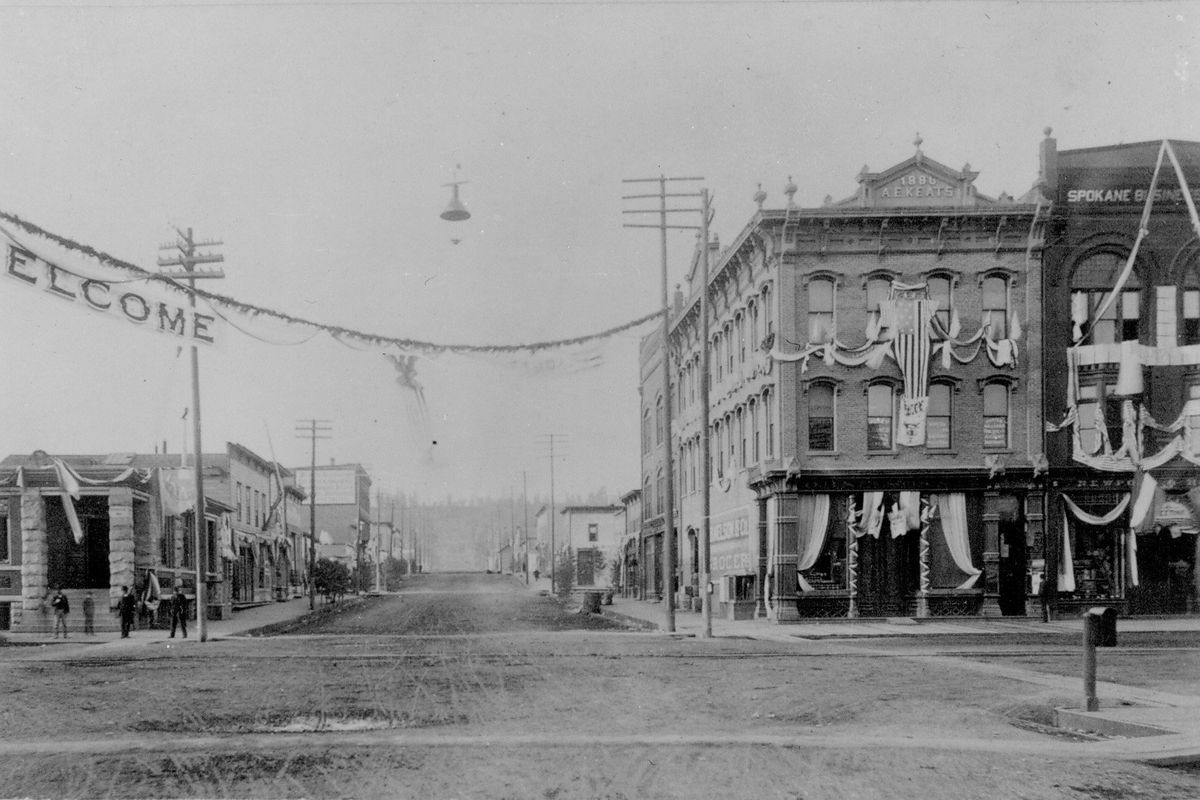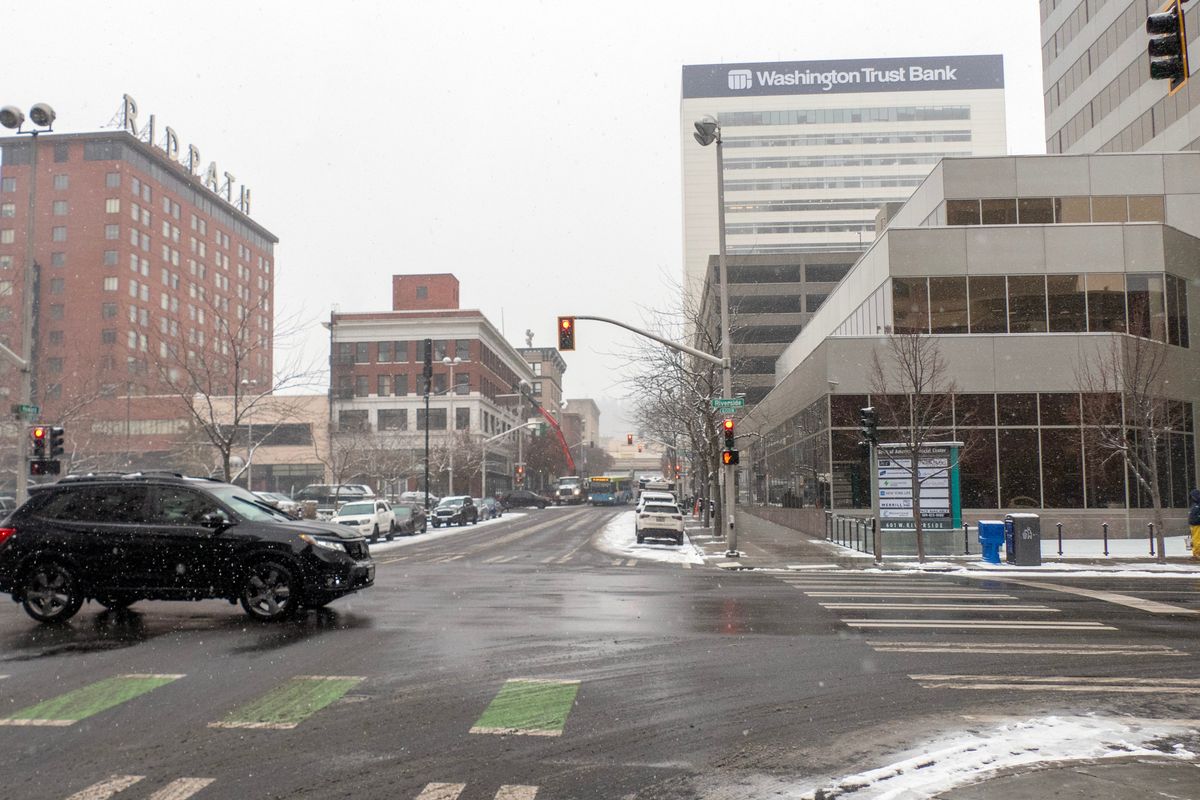Then and Now: A.E. Keats
Circa 1888: Looking south from Riverside Avenue and Howard Street shows the three-story Keats building at center right, constructed by pioneer businessman Albert E. Keats in 1886. His name is prominently featured in the entablature of the building. The grand brick buildings on the south side of Riverside, from Keats' block, the neighboring Moore block and the Hyde Block on Wall Street, were leveled by the great fire of 1889. Keats didn't rebuild, but he was already successful as co-owner of the Echo Roller Mill, a flour mill. The northwest corner of Riverside and Howard would be part of Spokane's banking hub well into the 21st century. The corner would be home to the Seattle & Eastern Trust Company, Seattle First National Bank, later called SeaFirst, then Bank of America Financial Center. (Northwest Room/Spokane Public Library)
Albert Edward Keats, born in Surrey, England, around 1852, was one of Spokane’s first generation of successful businessmen.
Although there are few records about his early career, he appeared in the region in the mid-1880s and first made news when he announced that he would construct a multi-story brick building on the northwest corner of Howard Street and Riverside Avenue. The Spokane Falls Review extolled the side-by-side Keats, Moore and Hyde blocks for their dignified brick facades in the burgeoning city.
Among Keats’ tenants: Merryman grocery and dry goods, the Samaritan Lodge fraternal club, and a handful of doctors’ and lawyers’ offices. O.B. Nelson and Co. succeeded Merryman’s store, and the Odd Fellows club later took over the third floor. Passersby said they could hear live music from violin and bassoon through the open upstairs windows when parties were held.
Keats partnered with Benton B. Bravinder around 1887 to buy and operate Echo Roller Mill, one of four flouring mills in the city. The mill on Havermale Island, with a capacity of 75 barrels a day, had been built by pioneers Samuel G. Havermale and George A. Davis.
Their competition were the C&C Mill, Centennial Mill Company and Spokane Oatmeal Mill. C&C was the largest.
Keats and Bravinder pushed the output to 125 barrels a day, and added improved equipment and employees to increase to 350 barrels.
On New Year’s eve 1888, the Echo mill employees were given a gold eagle coin and notices of raises for the staff.
A ravaging fire broke out downtown in August of 1889 and destroyed Keats’ building and dozens of blocks around it. Keats would not rebuild, though the mill was not damaged.
But booms in wheat production and costly railroad shipping rates made the business more difficult for the mill owners. In 1892, the wood-frame Echo mill burned down. The owners would eventually rebuild. When the Great Northern Railway built its 1902 depot on the island, eminent domain was used to take part of the mill, which was eventually torn down completely in 1927.
One of Keats’ last projects was when he and William Bacon built the side-by-side Vallamont Hotel and Buena Vista Apartments on Cedar Street, between Sprague and First Avenue. Keats died from a heart attack in his apartment there in 1913. He was 61.

